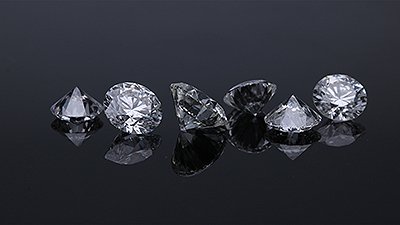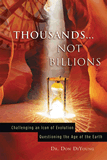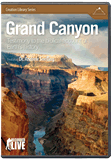
Feedback: Dating Rocks Helps Creation Scientists
Dr. Andrew Snelling explains how radioactive dating methods may help us derive not absolute but relative ages of rocks.
My Questions:
Isn’t everything relatively the same age with only a few days difference? If God created all matter in 6 days and matter can neither be created nor destroyed in our universe then isn’t everything the relatively the same age? So why do people try to ‘date’ rocks etc. if everything was created in 6 days. Don’t we already know when all things were created?
– Zach, U.S.
Dear Zach,
Thanks for your enquiry about dating rocks, which has been passed on to me for a response.
You are, of course, quite correct that, based on the authority of the Bible, God created the universe in six days, and therefore, all the original matter God created during those six days should be relatively the same age. That’s what God’s Word clearly teaches. Furthermore, God has provided in His Word the necessary details for us to know with certainty that the absolute age of the universe is about 6,000 years.
Subsequent to the Creation Week, the history of the earth unfolds in the book of Genesis with the Curse and then, about 1,650 years later, the cataclysmic global Flood in the days of Noah. At that time the whole face of the earth was changed, as the waters that covered the earth eroded rock materials and swept away all the creatures “in whose nostrils was the breath of the spirit of life
” (Genesis 7:22) that weren’t on board Noah’s Ark. Thus, billions of plants and dead animals were buried in rock layers laid down by water catastrophically all over the earth. In a relative sense these rock layers are therefore younger than the rock layers created by God during the Creation Week.
Similarly, during the Creation Week there was a sequence of events over those six days during which God created the different components of the universe and the earth. Thus, on Day One we are told He created the earth, and it was covered in water. Subsequently, on Day Three He created the dry land.
A Biblical Model for Formation of Rock Layers
One possibility is that there were rock layers under those globe encircling waters on Days One and Two of the Creation Week, and God uplifted some of those rock layers above the waters on Day Three to produce that dry land. As that uplift occurred catastrophically at God’s command, the waters would have drained off the emerging land surface, eroding some of those rock layers. The sediment carried away would form new sedimentary rock layers offshore. Thus, in a relative sense those newly formed sedimentary layers on Day Three of the Creation Week were younger than the original rock layers God created on Day One.
Thus, we can see that on the basis of God’s Word we could expect different rock layers to have different relative ages—based on the model I described above, the Day Three rocks would be younger than the Day One rocks of Creation Week; the Flood rocks are younger still; and any post-Flood rocks are the youngest of all. These relative age relationships can be seen in the stacking of the rock layers around the earth.
For example, in the Grand Canyon we see exposed in the Inner Gorge the crystalline foundation rocks, which are related back to the initial creation of the earth. On top of those we see sedimentary layers without fossils, and thus one could conclude that those layers were deposited before God had created life on the earth, and therefore, could be related to the sedimentary rock layers that may have been formed on Day Three during the uplift of the dry land. Then, on top of both the crystalline foundation rocks and these early non-fossil-bearing sedimentary rocks are flat-lying sedimentary layers full of fossils, the remains of the creatures swept away by the Flood waters and buried in those sediments.
No one argues about this relative order of the rock layers that reflects the sequential history of the earth, as described in God’s Word. This is how creationist geologists endeavour to distinguish the different rock layers exposed at the earth’s surface in relation to God’s record of earth history in His Word. Full details about how the rocks exposed in the Grand Canyon are classified in this relative age manner can be seen in my DVD titled The Grand Canyon: Testimony to the Biblical Account of Earth’s History.
How Does Dating Rocks Help Creation Scientists?
Older rocks dating back to the Creation Week have more radioactive decay products (daughter elements) in them than the younger Flood rocks.
As I said before, we know from God’s Word the absolute age of the original created rock materials. They are about 6,000 years old. Similarly, we know from God’s Word that the Flood occurred about 1,650 years after the Creation, so therefore, Flood rocks are about 4,350 years old. Similarly, the fossils contained in those rocks are only about 4,350 years old also. So why do people try to “date” rocks? Not all rock layers across the earth’s surface are exposed to view in canyons like the Grand Canyon. In many places there are just isolated outcrops, so it is difficult to determine where those rock layers fit into the relative sequence of Creation Week rock layers, Flood rock layers, and post-Flood rock layers. Not all Flood rocks have visible fossils in them. So in a relative sense we could use some of the dating methods to give us the relative ages of such isolated rocks so that once they are placed in the biblical sequence of earth history we would know their absolute ages. Ironically, the radioactive dating methods, though flawed in terms of being able to provide absolute ages, may still help us derive relative ages. For instance, older rocks dating back to the Creation Week should have more radioactive decay products (daughter elements) in them than the younger Flood rocks. And this is what we do find.
Assumptions Affect Interpretation
Of course, secular geologists use the same radioactive dating methods to yield interpreted ages for the rocks in terms of millions and billions of years. However, they derive these interpreted ages because they assume that radioactive decay rates have always been constant over millions and billions of years of the slow rates at which we measure these processes today. But the geologists were not there over the supposed millions and billions of years to check and measure that the radioactive decay rates have always been constant at today’s slow rates. This is an assumption they make, which is absolutely contradicted as wrong by God’s Word.
The Apostle Peter in 2 Peter 3 tells us of scoffers who will argue that the rates of natural processes have always been the same as today’s process rates because they deliberately reject God’s testimony of the Creation Week and the Flood, when He supernaturally intervened so that process rates were instant during the Creation Week and catastrophically faster during the Flood compared to the slow rates that man observes today. This probably included the speeding up of radioactive decay, at least during the Flood, which can be seen from the results obtained during the RATE (Radioisotopes and the Age of the Earth) research project, the results of which have been published in two technical volumes and in the book Thousands . . . Not Billions. I deal with this evidence in the DVD titled Radioactive and Radiocarbon Dating: Turning Foe into Friend. Using the wrong assumption about the constancy of radioactive decay rates championed by the secular scientists yields the inaccurate result of millions and billions of years.
On the other hand, as I indicated earlier, it may be possible for creation geologists to use these radioactive dating methods in a relative sense. For example, volcanic rocks laid down in the first month of the Flood would have experienced up to a year of accelerated radioactive decay within them, whereas volcanic rocks laid down during the last month of the Flood would have only experienced one month of accelerated radioactive decay. Thus, it may be possible to determine the relative ages of different volcanic rocks, for example, during the Flood year using these radioactive dating methods. Knowing the relative ages of rocks during the Flood may have practical implications. For example, economic deposits of metals have been found to occur more frequently in rocks of particular relative ages.
So thanks again for your enquiry. I hope these brief comments are a help to you.
Yours sincerely in Christ,
(Dr.) Andrew Snelling
Recommended Resources

Answers in Genesis is an apologetics ministry, dedicated to helping Christians defend their faith and proclaim the good news of Jesus Christ.
- Customer Service 800.778.3390
- © 2024 Answers in Genesis







